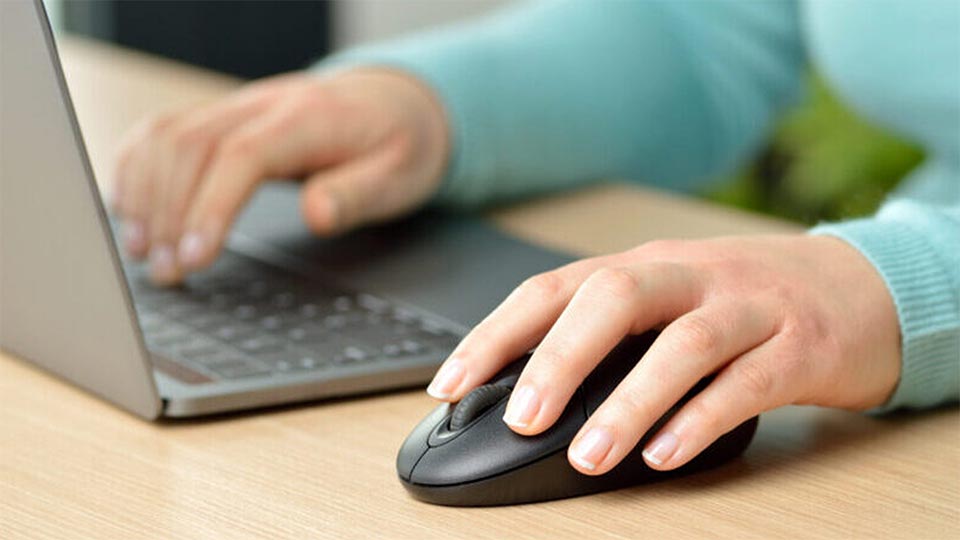Numbness, tingling, soreness and discomfort in the hand, fingers, forearm, and elbow are all signs that you may be using your mouse too much. In today’s world of technology (and the world post-covid), we rely heavily on the computer and mouse to complete our work and personal tasks. However, with this type of repetitive work, our soft tissue structures throughout the hands, wrists and arm may become pre-exposed to possible injuries.
Nevertheless, there are ways to reduce your chances of injury. By making small adjustments to your mouse settings and usage, you can be proactive in preventing soft tissue damages in your hands, wrists and surrounding structures.
Take a look at these tips to begin mousing in a healthier way.
Switch mouse hands. It may feel strange or uncomfortable at first, but your muscles and tendons will feel relieved. Switching hands regularly will allow your soft tissue structures to rest and recover from the repetitive work. When switching your mousing hand, change your primary clicking button to the opposite side. To do this, go into the Settings function on your computer, select Mouse, and under “Primary Button” you can select your preferred side.
Adjust cursor speed to match your primary tasks. For high detailed work such as image editing or drawing, you might benefit from a slower cursor speed for better control and accuracy. If your work doesn’t involve fine movement or high detail, you would likely benefit from increasing the cursor speed. This will reduce the duration of physically moving the mouse during your navigation. Not only will this decrease your time moving the mouse, but it will enhance your productivity. To do this, go into the settings function on the computer, select Mouse; under “Cursor Speed”, you can select your preferred speed.
Utilize the side buttons. The side buttons of a mouse can be programmed to perform multiple tasks. By default, they are set to navigate forward and back onto a web page. Utilizing this feature, will reduce the repetitive scrolling and clicking of the hands and fingers. The bottom button allows you to go back a web page and the top button allows you to go forward.
By incorporating these tips into your mousing tasks, you’re taking a proactive approach to saving your hands and wrists from pain and injury, so that you can keep working comfortably.
